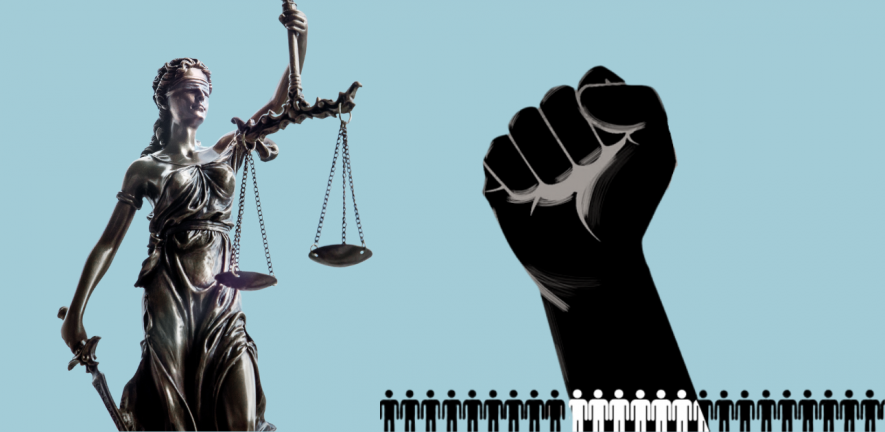Why PILs Are Necessary for Securing a Welfare State

THE doctrine of separation of powers is not an embargo on courts to review executive policies. While formulation of policy falls within the domain of the executive, courts can very much examine whether a government policy meets the standards set by our Constitution. Similarly, courts are duty bound to intervene when the executive fails to discharge its constitutional and statutory obligations in promoting a ‘welfare state’. Judicial review of State action (or inaction) assumes greater importance when the rights and aspirations of the disadvantaged sections of society are at stake.
This piece covers three important interventions made by the Supreme Court during the last one year, two of which are relatively less known in the public domain. The common thread in all these three cases is the failure of the State in securing a ‘welfare State’ for the oppressed and the disadvantaged.
The concept of a welfare state has been explained by the Supreme Court in its judgment in the case of Lala Ram versus Union of India & Anr. (2013). It contemplates a setup wherein the weaker sections of society are accorded not just economic, political, and social rights, but also “special protection measures” for their welfare and upliftment.
The subject matter in these three cases pertains to the rights of those who have been marginalised by society. The directions passed by the Supreme Court in these cases reflect how public interest litigation (‘PIL’) can alleviate their suffering.
Providing dignity to sex workers
The first such intervention was in the case of Budhadev Karmaskar versus State of West Bengal & Ors. last month. This case has rightly received wide coverage. In this case, the Supreme Court issued a slew of directions in the exercise of its extraordinary powers under Article 142 of the Constitution so as to ensure basic human rights and dignity for sex workers across the country. The directions were necessitated on account of executive inertia (and also resistance) in bringing about much-needed reform for the betterment of the lives of sex workers.
Also read: ‘Sex workers are now citizens with entitlement’, says senior advocate, Anand Grover
It may be noted that these directions were a long-time coming since the Union Government had been dragging its feet on the subject matter pertaining to the inclusion and rehabilitation of sex workers for a considerable period of time.
Judicial review of State action (or inaction) assumes greater importance when the rights and aspirations of the disadvantaged sections of society are at stake.
Some of the significant directions passed by the division bench of Justices L. Nageswara Rao, B.R. Gavai, and A.S. Bopanna in this case include:
- A reiteration of the law that consensual sex work by adult sex workers is not a criminal offence;
- A legal affirmation of the fact that sex workers are entitled to equal protection of the laws;
- An injunction against the police authorities to cease and desist from meting out brutal and violent treatment on sex workers;
- Issuance of Aadhar Cards to sex workers without any possibility of any revelation of their identity as sex workers.
By passing such directions, the Supreme Court has made significant strides in removing sex workers from the fringes of society.
Also read: Securing sex workers’ future: Significance of Supreme Court’s directions
Rehabilitation of persons suffering from mental illnesses
The second significant intervention by the Supreme Court was in the case of Gaurav Kumar Bansal versus Mr. Dinesh Kumar & Ors. in September last year. This case pertains to the implementation of the Mental Health Care Act, 2017, which the court noted was ‘tardy’ at various levels by most states and union territories (‘UTs’). Under the said legislation, “mental health care” is a broad and all-encompassing concept which includes not just ‘diagnosis’ and ‘treatment’, but also ‘care’ and ‘rehabilitation’ of persons suffering from mental illness. The Act gives every such person the right to access “mental healthcare” and treatment from mental health services run or funded by the State. Such services include accommodation in community-based establishments called “Half-way Homes”. These half-way homes are supposed to facilitate the process of rehabilitation of persons who have undergone mental healthcare treatment.
The Supreme Court directions were a long-time coming since the Centre had been dragging its feet on the subject matter pertaining to inclusion and rehabilitation of sex workers for a considerable period of time.
The division bench of Justices D.Y. Chandrachud, Vikram Nath, and Hima Kohli noticed that several States were simply re-designating existing establishments as half-way homes to demonstrate compliance under the Act. Accordingly, the bench directed all states and UTs to submit reports regarding the progress made towards establishing half-way homes. The court is now monitoring the progress made by states and UTs in establishing half-way homes across India. The bench in its directions had made it abundantly clear that it expects the process of establishment of such half-way homes is completed in an expeditious manner.
Another disturbing practice which drew the ire of the court was that in certain states, persons who were overstaying in mental health care institutions (due to poverty and despondency) were being transferred to beggar homes and custodial institutions. The court took cognizance of this insensitive practice and passed urgent directions to ensure that such practices are proscribed since they fall foul with the provisions of the Mental Health Care Act.
Also read: Mental Healthcare Act: issues of intersectionality and stigma need to be addressed
Quality education for children with special needs
And finally, in the case of Rajneesh Kumar Pandey & Ors. versus Union of India & Ors. (2021), the Supreme Court passed a detailed judgment in October last year containing several directions (which are applicable pan-India) for imparting inclusive and quality education to children with special needs (‘CwSN’).
The court directed all states and UTs to submit reports regarding the progress made towards establishing half-way homes. It is now monitoring the progress made by states and UTs in establishing half-way homes across India.
The court was called upon to address the shortfall of qualified special teachers for imparting education to CwSN at the primary and secondary levels of schooling. The thrust behind this case was the illegality being committed by the concerned State authorities in employing teachers in recognised schools on a contractual basis without any certainty of tenure. The bench noted that there was a dearth of rehabilitation professionals or special teachers, who alone can impart education to CwSN.
The division bench of Justices A.M. Khanwilkar, Dinesh Maheshwari, and C.T. Ravikumar, declared in no uncertain terms that CwSN are entitled to have access to free, inclusive, and quality education under the Right of Children to Free and Compulsory Education Act, 2009. The bench further observed that for meaningful and effective imparting of education and training to CwSN, different norms and standards ought to be followed; for that purpose, the concerned schools are obliged to create posts of rehabilitation professionals/special education teachers commensurate to the number of CwSN students in the given school.
The bench noted that no norms and standards had been prescribed by the union government for the appointment of rehabilitation professionals or special teachers for schools admitting CwSN. Accordingly, the bench directed the Union Government to notify the norms and standards of pupil-teacher ratio, and also separate norms for special teachers who alone can impart education and training to CwSN in the general schools. Once these norms were specified, state governments and schools were required to create commensurate permanent posts, and thereafter make appointments for rehabilitation professionals/special teachers who can cater to the needs of CwSN.
As a stop gap arrangement (till such norms were specified by the Union Government), the court prescribed different pupil-teacher ratios for children with different disabilities to be adopted across India. For instance, for children with cerebral palsy, a pupil-teacher ratio of 8:1 was prescribed by the court, and for children with intellectual disability, Autistic Spectrum Disorder and specific learning disabilities, a pupil-teacher ratio of 5:1 was prescribed.
The court directed the Centre to notify the norms and standards of pupil-teacher ratio, and also separate norms for special teachers who alone can impart education and training to CwSN in the general schools. As a stop gap arrangement (till such norms were specified by the Centre), the court prescribed different pupil-teacher ratios for children with different disabilities to be adopted across India.
The directions passed in this case will facilitate the provision of inclusive education for CwSNs across the country.
Also read: Shedding Light on NIPUN Bharat
Ensuring compliance
In all the three cases cited above, the Supreme Court has given meaning and content to the expression ‘right to life’ under Article 21 of the Constitution. Instead of just laying down lofty legal principles, the court has passed substantive directions which can result in last-mile delivery of welfare measures to the oppressed and beleaguered sections of our society.
The three cases in question highlight the constructive role PILs and Article 32 of the Constitution can play in securing a welfare state. Quite often, laws, policies, plans and schemes are formulated, but their implementation at the ground level is wanting on account of bureaucratic red tape or a lack of political will or the alibi of poor finance. Therefore, such directions of the court ensure that laws, schemes, and policies are given impetus, and in substance become an instrument for alleviating the sufferings and hardships of the people.
Get the latest reports & analysis with people's perspective on Protests, movements & deep analytical videos, discussions of the current affairs in your Telegram app. Subscribe to NewsClick's Telegram channel & get Real-Time updates on stories, as they get published on our website.
























